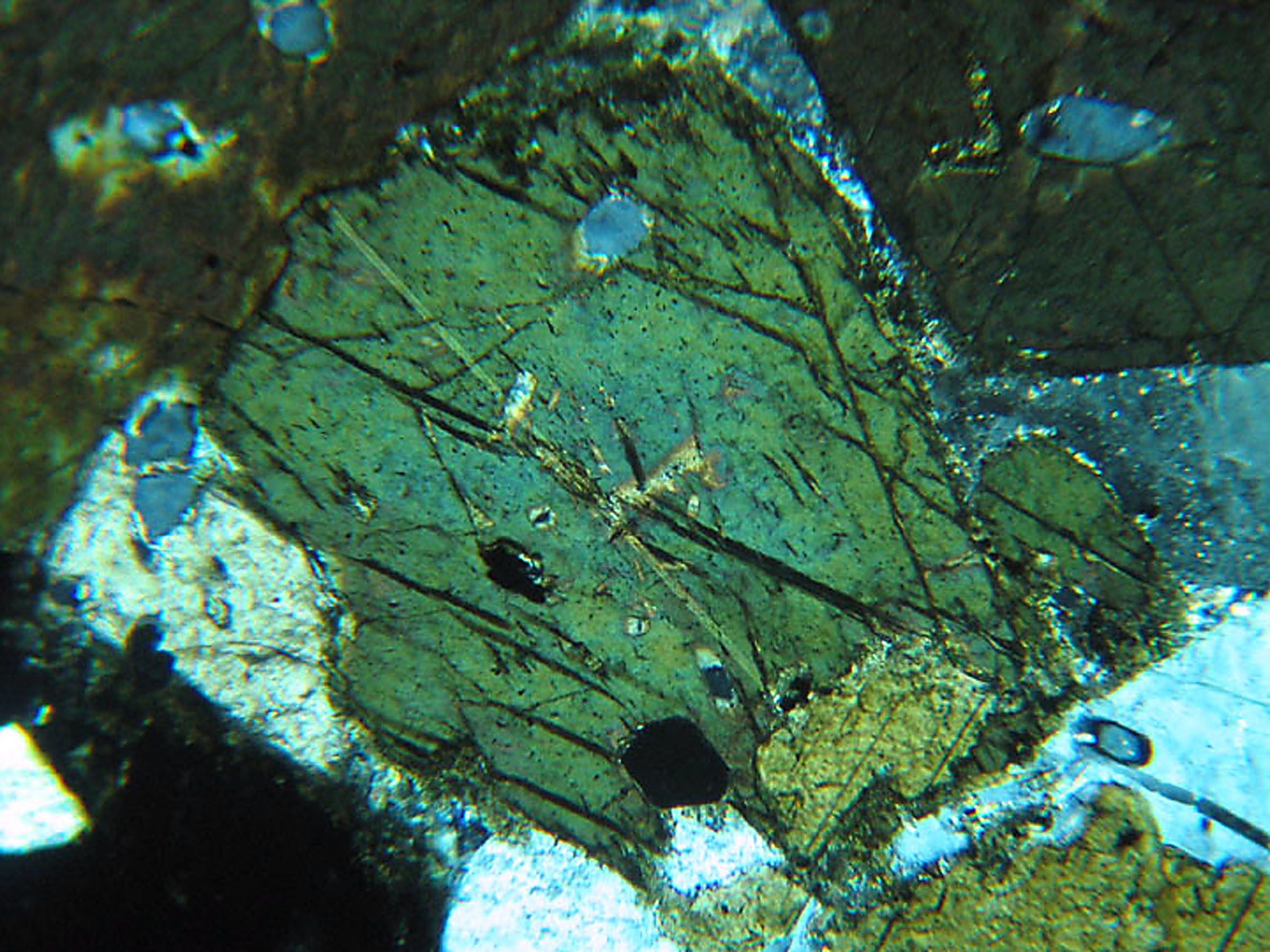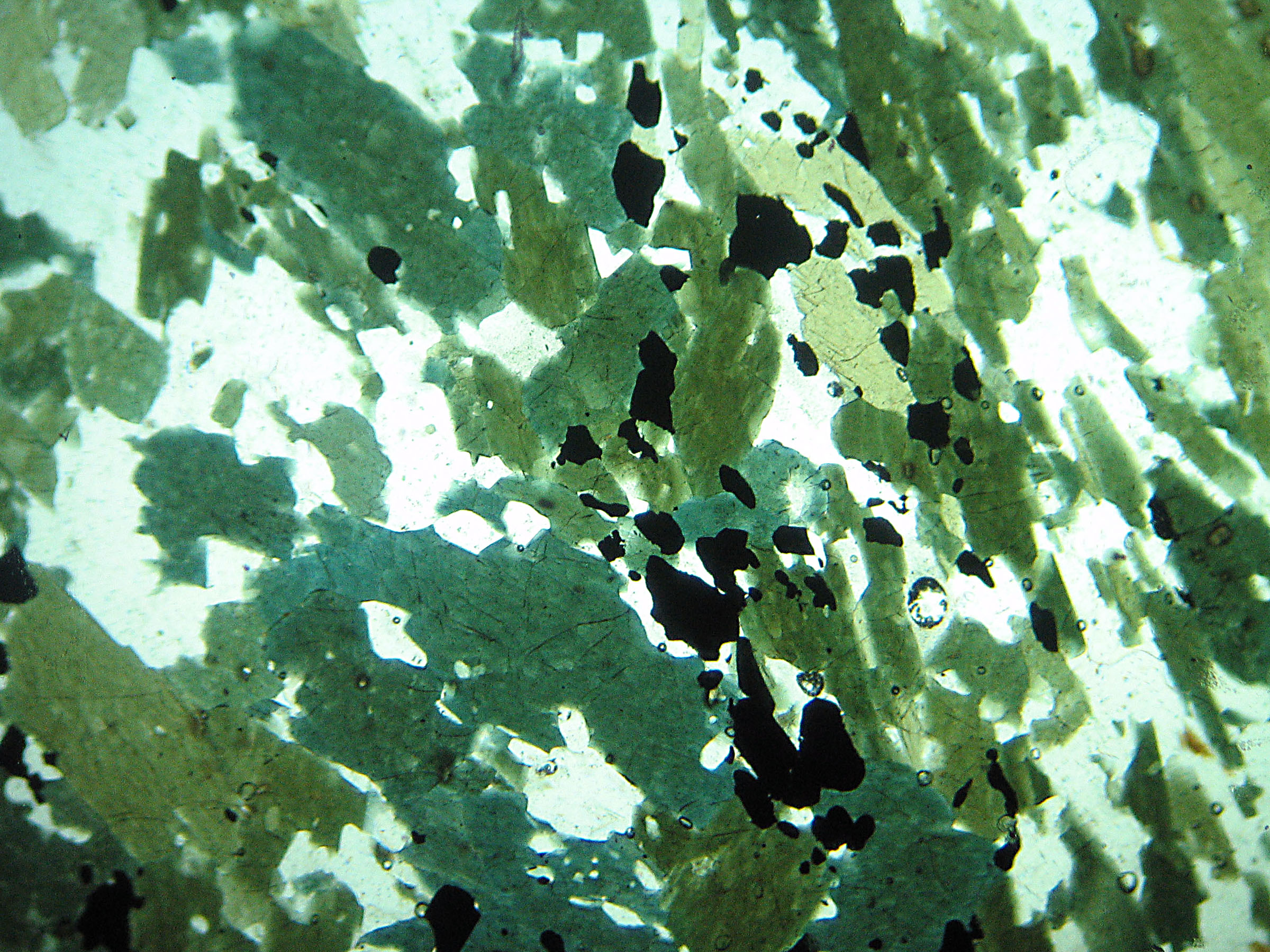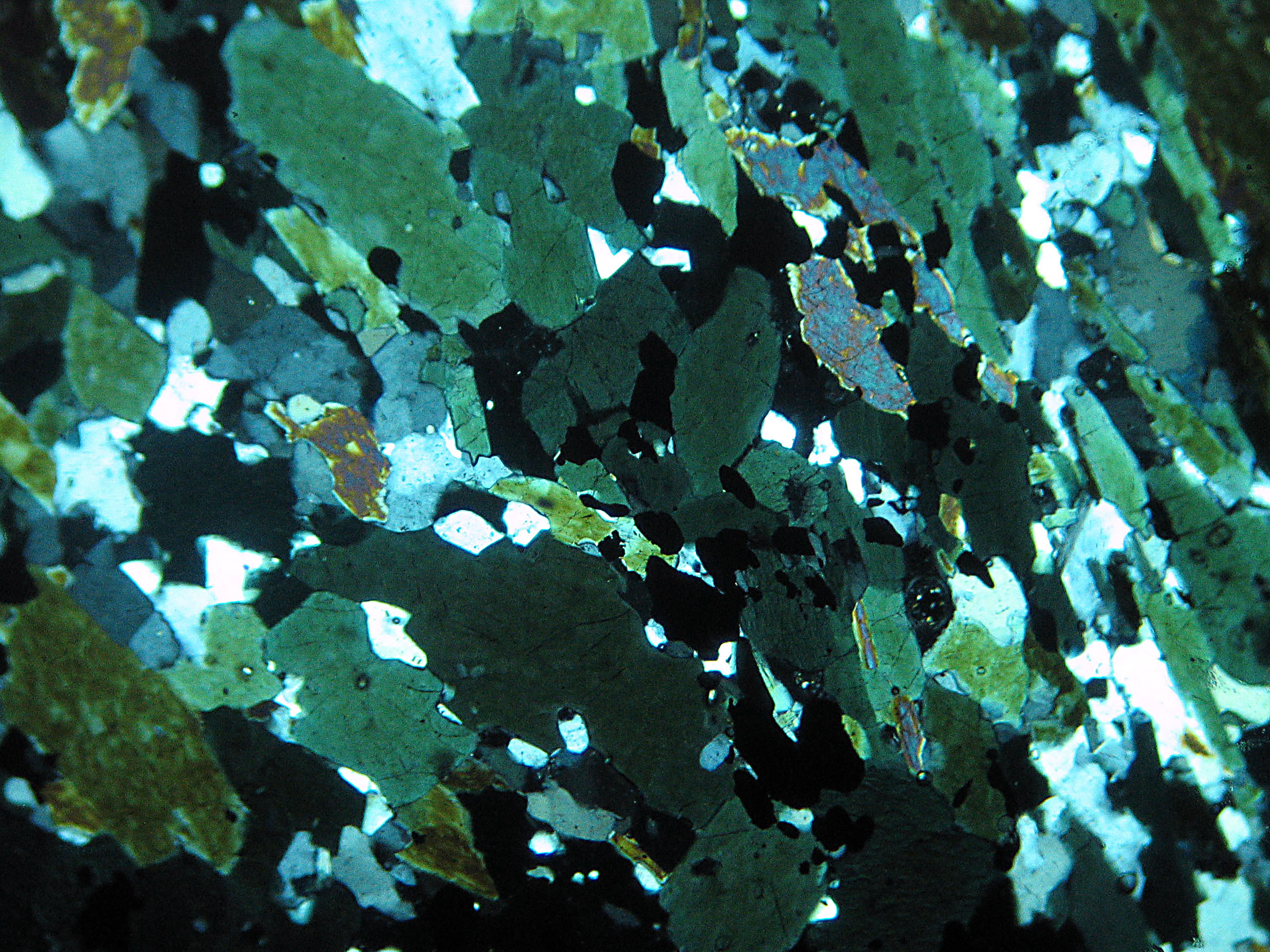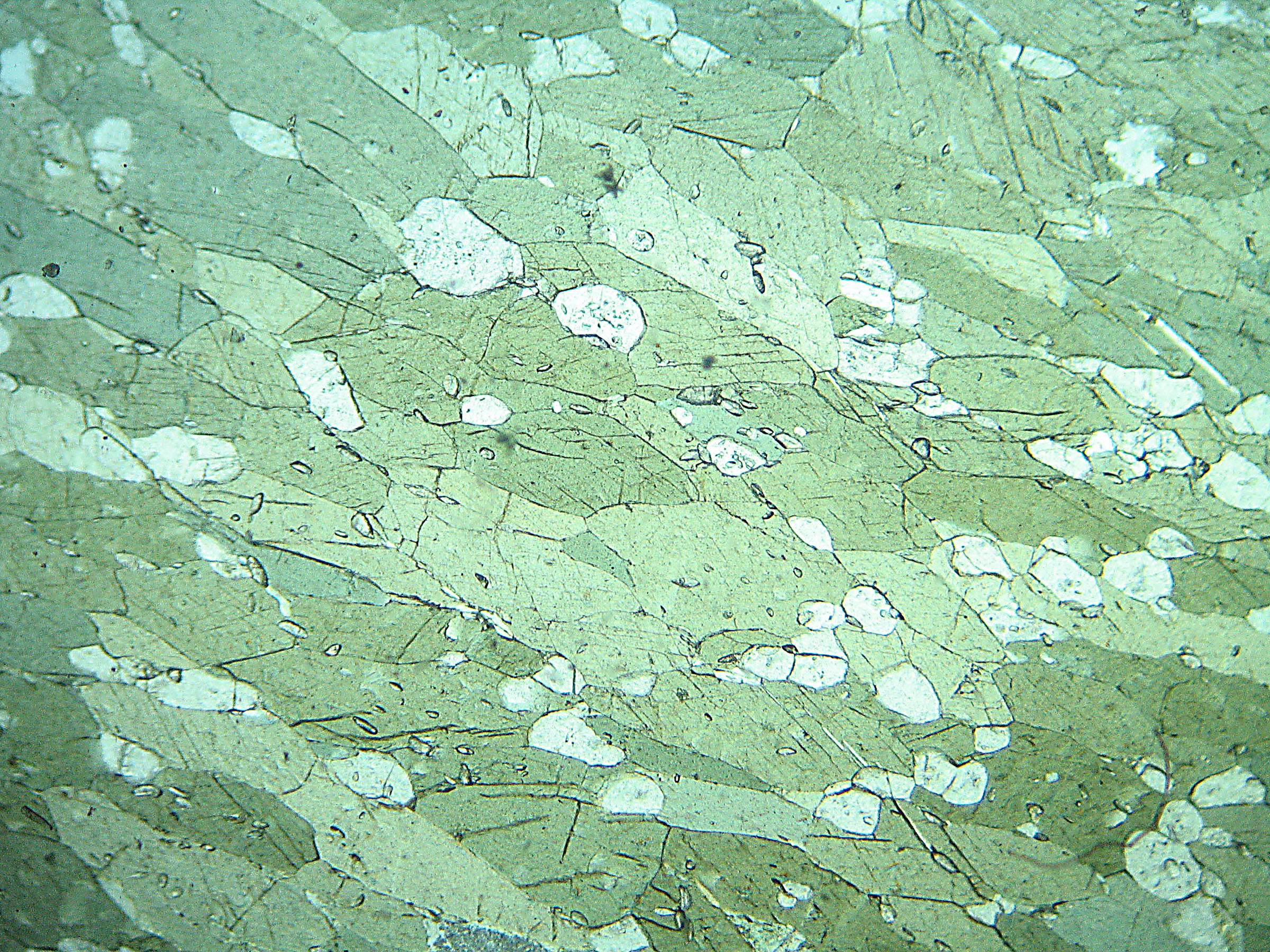Hornblende in Syenite from near Cuttingsville, Vermont


The photos above show a large grain of hornblende with several other hornblende grains around it. Calcite is present down and to the left of the largest hornblende grain. Plagioclase fills the space between grains. Typical amphibole cleavage can be seen.
The field of view is about 2.5 mm across.




